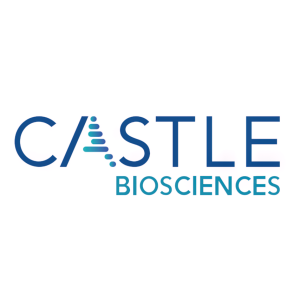American Gastroenterological Association (AGA) Clinical Practice Update States That TissueCypher® May Be Beneficial for Risk-Stratification of Patients with Non-Dysplastic Barrett’s Esophagus
TissueCypher® is a risk-stratification test that improves risk-appropriate clinical decision-making for patients diagnosed with non-dysplastic, indefinite or low-grade dysplasia Barrett’s esophagus
“TissueCypher uses artificial intelligence to provide clinicians with critical information about a patient’s risk of developing HGD or EAC beyond what is possible through traditional pathology review,” said
“Current approaches for risk stratification of patients with BE, both in community practice and academic clinical settings, are limited to subjective systems that have failed to stem the rapid rise in the incidence of EAC over the last few decades,” said
AGA Clinical Practice Update
AGA’s clinical practice updates present the current state-of-the-art guidance and include a combination of evidence-based information, and when not available, best consensus opinion concerning the management of gastrointestinal (GI) diseases.2 AGA’s latest update on BE was an expert review commissioned jointly by the AGA Institute Clinical Practice Updates Committee, the
The potential risk-stratification benefit of TissueCypher in the management of patients with BE is included in BPA 9 in the recent update: “Tissue systems pathology-based prediction assay may be utilized for risk-stratification of patients with non-dysplastic BE.”
Several clinical studies were cited as evidence in the BPA.3-6 These studies provide further support for the overall accuracy and strong, independent predictive ability of TissueCypher in risk-stratifying patients for progression to esophageal cancer, by identifying both high-risk patients who may be missed by the current standard of care as well as low risk patients who may be able to avoid unnecessary treatments.
About TissueCypher® Barrett’s Esophagus Test
The TissueCypher Barrett’s Esophagus test is Castle’s precision medicine test designed to predict future development of high-grade dysplasia (HGD) and/or esophageal cancer in patients with Barrett’s esophagus (BE). The TissueCypher Barrett’s Esophagus test is indicated for use in patients with endoscopic biopsy confirmed BE that is graded non-dysplastic (NDBE), indefinite for dysplasia (IND) or low-grade dysplasia (LGD); its clinical performance has been supported by nine peer-reviewed publications of BE progressor patients with leading clinical centers around the world. The test received Advanced Diagnostic Laboratory Test (ADLT) status from the
About
Castle’s current portfolio consists of tests for skin cancers, uveal melanoma, Barrett’s esophagus and mental health conditions. Additionally, the Company has active research and development programs for tests in other diseases with high clinical need, including its test in development to predict systemic therapy response in patients with moderate-to-severe psoriasis, atopic dermatitis and related conditions. To learn more, please visit www.CastleBiosciences.com and connect with us on LinkedIn, Facebook, Twitter and Instagram.
DecisionDx-Melanoma, DecisionDx-CMSeq, DecisionDx-SCC, myPath Melanoma, DecisionDx DiffDx-Melanoma, DecisionDx-UM, DecisionDx-PRAME, DecisionDx-UMSeq, TissueCypher and IDgenetix are trademarks of
Forward-Looking Statements
This press release contains forward-looking statements within the meaning of Section 27A of the Securities Act of 1933, as amended, and Section 21E of the Securities Exchange Act of 1934, as amended, which are subject to the “safe harbor” created by those sections. These forward-looking statements include, but are not limited to, statements concerning: TissueCypher’s potential to (i) benefit patients with NDBE through its risk-stratification; (ii) save lives by helping clinicians identify patients at high risk of progression earlier in their treatment; (iii) be a game-changing innovation through its ability to identify patients at risk of progression to HGD, EAC and esophageal cancer; and (iv) benefit patients as part of an improved care pathway for managing patients with BE. The words “can,” “potential,” “may” and similar expressions are intended to identify forward-looking statements, although not all forward-looking statements contain these identifying words. We may not actually achieve the plans, intentions or expectations disclosed in our forward-looking statements, and you should not place undue reliance on our forward-looking statements. Actual results or events could differ materially from the plans, intentions and expectations disclosed in the forward-looking statements that we make. These forward-looking statements involve risks and uncertainties that could cause our actual results to differ materially from those in the forward-looking statements, including, without limitation: the effects of the COVID-19 pandemic on our business and our efforts to address its impact on our business; subsequent study or trial results and findings may contradict earlier study or trial results and findings, including with respect to the discussion of the TissueCypher® Barrett’s Esophagus Assay in this press release; actual application of our tests may not provide the aforementioned benefits to patients; and the risks set forth under the heading “Risk Factors” in our Quarterly Report on Form 10-Q for the three months ended
1TissueCypher website: https://tissuecypher.com/tissue-cypher/how-does-it-work/
2
3Davison JM, Goldblum J, Grewal US, et al. Independent Blinded Validation of a Tissue Systems Pathology Test to Predict Progression of Patients with Barrett’s Esophagus. Am J Gastroenterol. 2020; 115:843-852.
4Frei NF, Konte K, Bossart EA, et al. Independent Validation of a Tissue Systems Pathology Assay to Predict Future Progression in Non-dysplastic Barrett’s Esophagus: A Spatial-temporal Analysis. Clinical and Translational Gastroenterology. 2020;
5Hao J, Critchley-Thorne RJ, Diehl DL, et al. A Cost-Effectiveness Analysis of an Adenocarcinoma Risk Prediction Multi-biomarker Assay for Patients with Barrett’s Esophagus. Clinicoeconomics Outcomes Res. 2019;11:623-635.
6Iyer P, Codipilly D, Chandar A, et al. Prediction of progression in Barrett’s esophagus using a tissue systems pathology test: a pooled analysis of international multicenter studies. Clinical Gastroenterology and Hepatology 2022.
View source version on businesswire.com: https://www.businesswire.com/news/home/20220804005040/en/
Investor Contact:
czuckero@castlebiosciences.com
Media Contact:
amarshall@castlebiosciences.com
Source:






